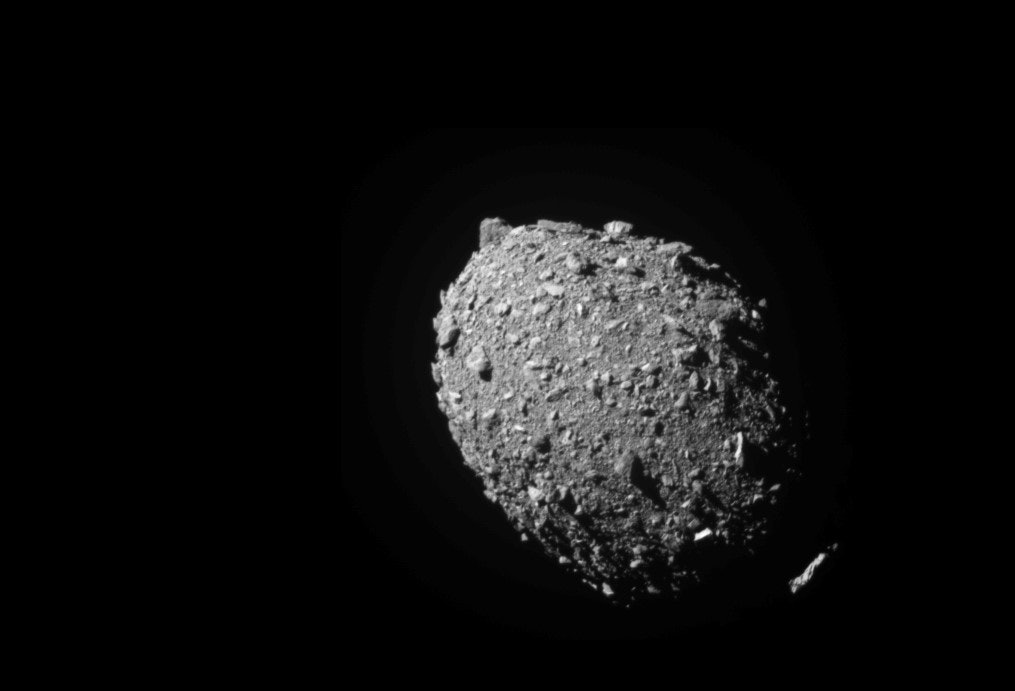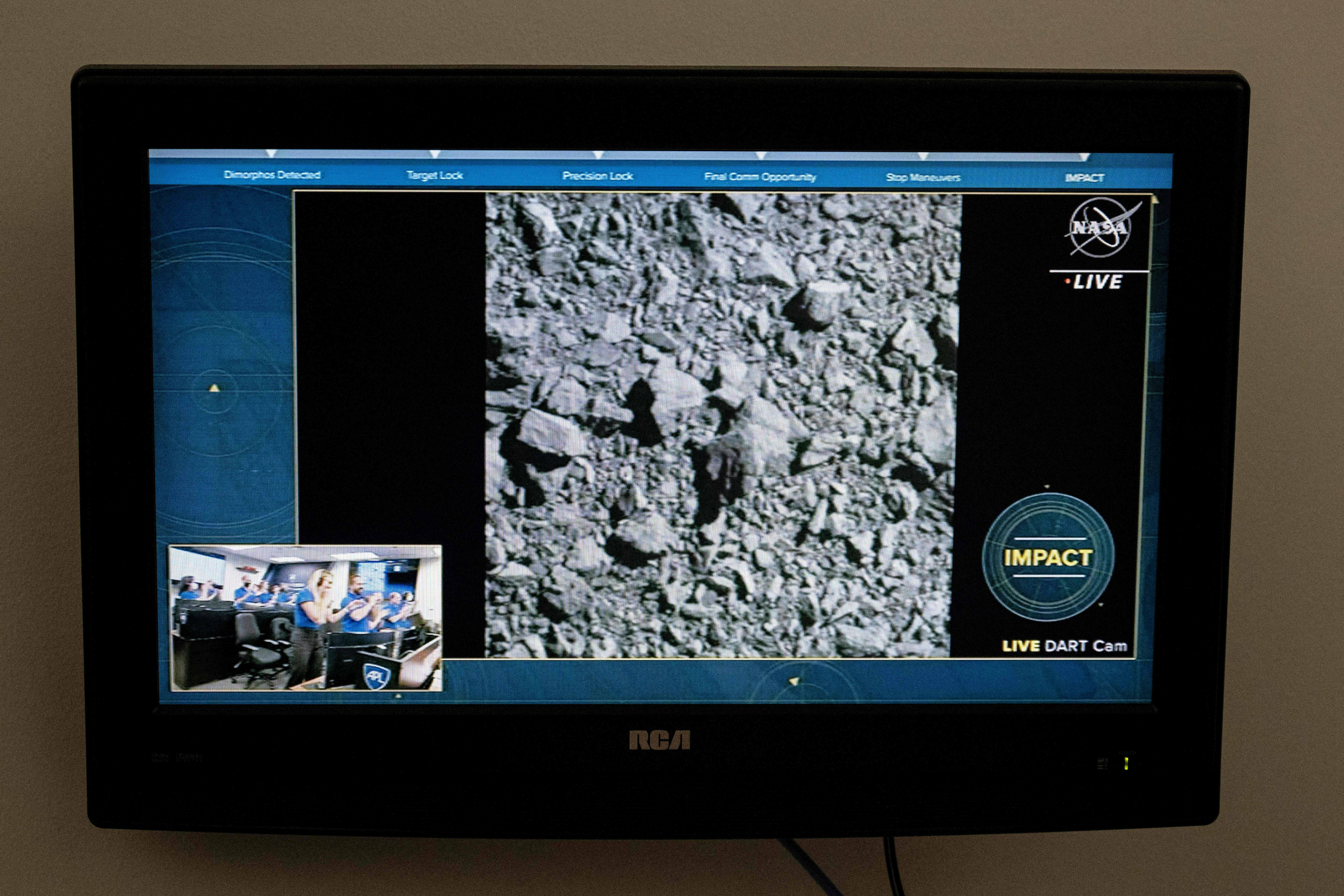
Real-time footage of NASA’s Double Asteroid Redirection Test (DART) showed the moments before its demise on the surface of the rock Dimorphos. The fatal blow was intentional, an unusual premise for a spacecraft. So it makes sense that, with more than 5 million views on YouTube, many people want to know if DART accomplished its unique goal.
That answer depends on a number of factors. If DART changed the path of the asteroid with Monday’s kinetic impact, it would be the very first time it’s happened. Careful and creative analysis will be necessary to see if Earth can save itself from the perilous path a future asteroid might make toward our precious planet.
What we’ve seen so far — “It looks very alien,” Scott Sheppard, an asteroid researcher at the Carnegie Institution of Science, tells Inverse. “I kind of expected it to be more regolith, like a more sandy material. But it looked like it was all fairly large rocks. This body has probably been hit by other small asteroids over time.”
This plays an important role in the assessment. “There’s a lot of unknowns about the asteroid. So if the asteroid is more dense material, then the change in its velocity is going to be different than if it’s a less dense material.”

How will scientists analyze the DART crash?
Teams need to know how to interpret what they see, so they’ll perform a sort of calibration.
Dimorphos accompanies a much larger asteroid, called Didymos. Whether or not DART successfully altered Dimorphos’ orbit around Didymos is currently unknown, but could be answered with the help of computer simulations. These should tell scientists how kinetic impacts play out on asteroids. Then, when the DART Investigation Team is armed with these specs, they’ll compare models to what they’ve seen happen in real life. According to NASA, this “will evaluate the effectiveness of this mitigation approach … as well as how accurate the computer simulations are and how well they reflect the behavior of a real asteroid.”
This behavior will reveal itself, hopefully, to any one of numerous telescopes across Earth that are available to DART since, as NASA added, “this mission engages the international planetary science community and embraces worldwide cooperation to address the global issue of planetary defense.”
The next stages
When will the team know if DART worked?
Inverse asked Andy Rivkin, DART co-investigation lead and research astronomer at Johns Hopkins Applied Physics Laboratory, to find out.
“The answer depends in some ways on how big of a change DART made,” Rivkin says. “Larger changes in Dimoprhos’ orbit will be easier to measure.”
But noticing that change will be a challenge in the near-future. “The debris cloud caused by DART’s impact will need to clear somewhat before we can start making measurements,” Rivkin added.
A rough timeline — “We are expecting to spend the next month or so collecting telescopic data and understanding what the shape of Dimorphos is,” Rivkin says, “and then spending the month or two after that doing computer simulations to understand the impact and the subsequent motion of Didymos and Dimorphos.”
Sheppard thinks it could take weeks or months to figure out how Dimorphos’ orbit around the larger asteroid has changed.
Despite the exciting preliminary footage of DART’s strike, Sheppard says, “I think the big takeaway from this is actually yet to be found … they need to now monitor the asteroid looking for eclipse events. As the moon passes in front of the primary, the main body, these eclipse events should get slower and slower.”
Rivkin’s team hopes to be able to publish results in November or December, when they could give presentations about DART at the American Geophysical Union meeting. They hope to release additional information before then.







